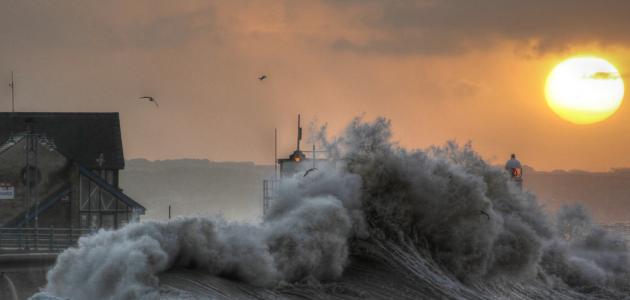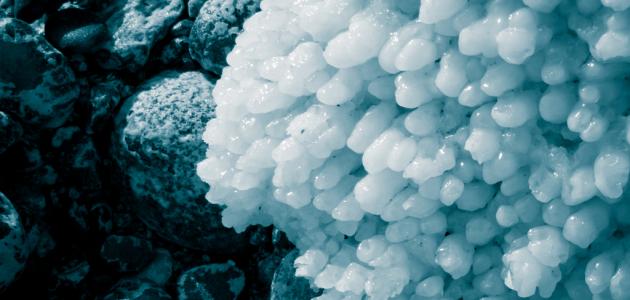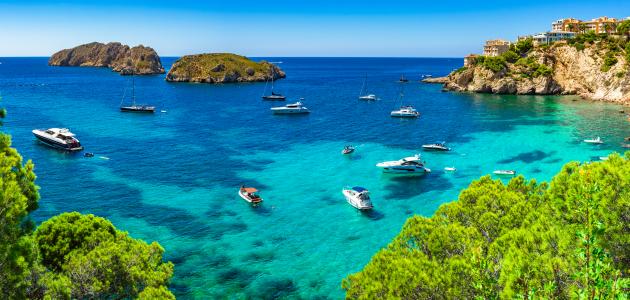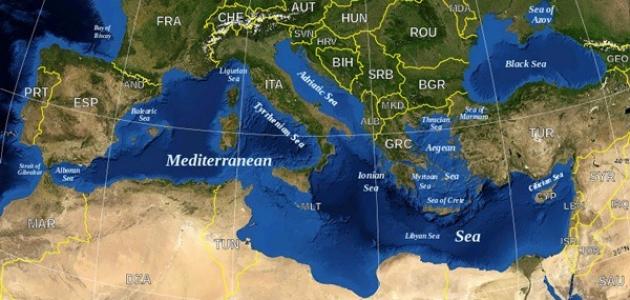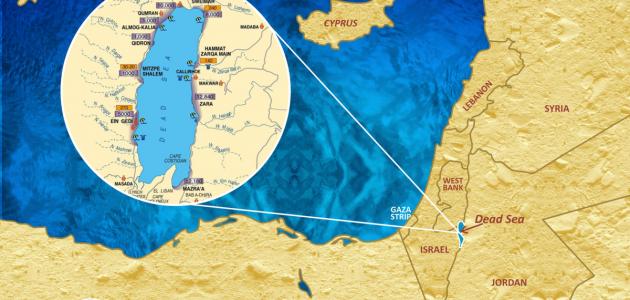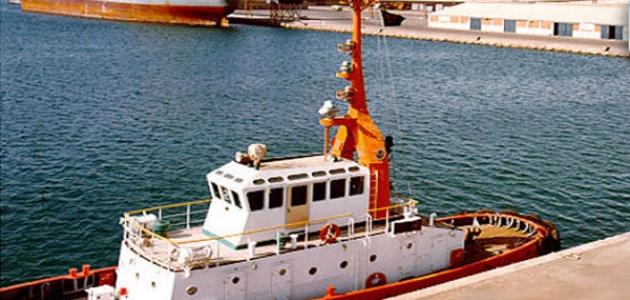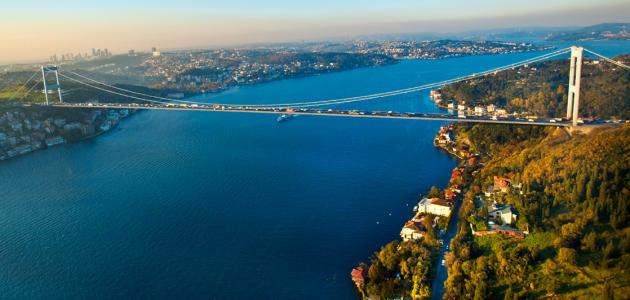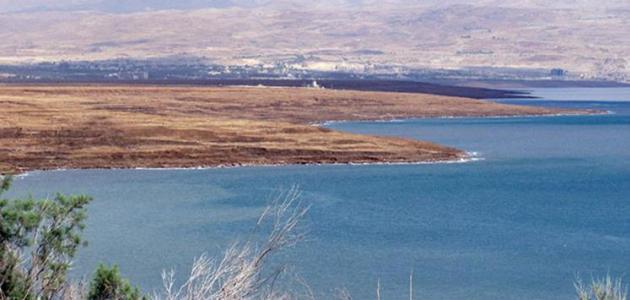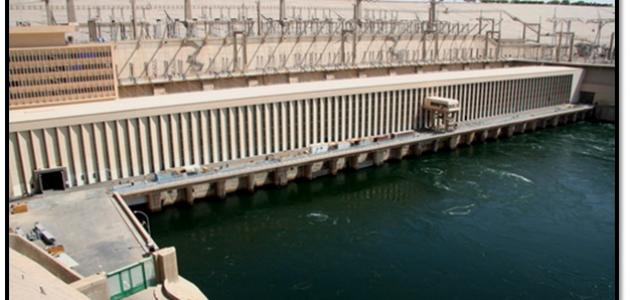The formation of tidal phenomena
The phenomenon of tides occurs as a result of the rise or fall of sea level due to the influence of the gravitational force of the Sun and Moon on the oceans and the centrifugal force resulting from the Earth's rotation around itself. More precisely, the rising water level represents the tide, while the receding water level represents the tidal wave. Because the Moon is closer to the Earth than the Sun, it affects the ocean waters with an attractive force twice as strong as the Sun’s attraction, even though it is smaller in size than the Sun. The Moon’s gravitational force causes a slight rise in the ocean waters, and these changes occur in both hemispheres of the Earth. Facing the moon, where the tide occurs on one side and the low tide occurs on the other side; Because the water that was exposed to the tide on the side opposite the moon must have tidal action on the other side, and when the Earth, the moon, and the sun are all on the same meridian (as is the case in the cases of the full moon and new moon), the occurrence of the tide increases; Because of the combination of the force of solar attraction and the force of attraction of the moon together, it exceeds the force resulting from the centrifugal force of the Earth, which leads to the attraction of bodies of water on the surface of the Earth. The tide in this case is known as (high tide), while (moderate tide) is formed if the moon falls on The side length is a right angle with respect to the positions of the sun and the moon, which reduces the force of solar attraction and thus lowers the tidal level. Tides occur twice a day (once every 12 hours), with the time period between tides being approximately 6 hours.
Read also:Where is the Caspian Sea located?The importance of tidal phenomena
The phenomenon of tides plays an important role in cleansing seas, oceans, estuaries, and ports of impurities and sediments. It also helps ships and ships enter ports in shallow areas. In ancient times, humans were able to exploit the power of the tide to grind grains, by confining tidal water in a tank during high tide until it was full, then closing the tank’s gates so that the water surface level in the tank became higher than sea level when the water receded. In the modern era, the importance of tides in generating energy has become apparent by taking advantage of the water level difference between the tides and the tides. Power generation stations rely mainly on the existence of a minimum level difference between the tides and the tides, so that not all tidal areas can be suitable for use in generating energy. Energy: It has been shown that there are only 100 bays around the world suitable for generating energy. For example, Germany tried to take advantage of Jadebusen Bay, which has a tidal height of 4 metres, but the site turned out to be unsuitable for power generation because the required height was 5 metres. In fact, it is difficult to always obtain a suitable height for the tidal level difference; Because this phenomenon occurs every 12 hours during the day, power generation stations produce many times more energy during the beginning and middle of the lunar month than they produce during low tides.
Read also:Where is the Strait of Tiran located?Tidal conditions
The tide is at its strongest when the difference between the tide and the tide is large, and this is achieved when the sun, the moon, and the Earth lie on a straight line, and the force of the moon’s attraction reaches its maximum when the phenomenon of eclipse occurs, where the force of the sun and the force of the moon merge together to form a large force that affects the water level. Oceans. The tidal force is at its lowest level when the sun's gravitational force tries to equalize the moon's gravitational force, and the two forces are perpendicular to each other, as the sun and the moon lie on the sides of the angle of its vertex at the center of the Earth, and this usually occurs in the first and third week of every lunar month.
Tides in the Atlantic Ocean
The occurrence of tidal phenomena in the Atlantic Ocean has been observed since ancient and medieval times, where it was observed that there is a tide in the North-South Atlantic basin in the shape of the letter “S” as if it were a large standing wave passing through the basin. The behavior of the tidal phenomenon depends in addition to the forces of solar and lunar attraction. It depends on several other factors, such as: features and specifications of the coastline, topography of the ocean floor, and prevailing wind patterns. The forms of tides vary in the Atlantic Ocean. There are semi-daily tides, which include the occurrence of two high tides and two tides within 24 hours and 50 minutes. This type of tide occurs along the eastern edge of the Atlantic Ocean and along most of North and South America. There are mixed tides, which are characterized by the presence of High tides and low tides during the day, and they occur frequently in the Gulf of Mexico, the Caribbean Sea, along the southeastern coast of Brazil, and in some areas of the Mediterranean Sea.
Read also:Where is the Gulf of Sirte located?Pacific tides
In contrast to the semi-permanent tides that occur in the Atlantic Ocean, the Pacific Ocean is characterized by daily and mixed tides, where daily tides include one high tide and one low tide during the day (24 hours and 50 minutes), and they occur frequently in the Gulf of Tonkin and Thailand. In Southeast Asia, the Java Sea in Indonesia, the Bismarck and Solomon Seas north and east of the island of New Guinea. As for the mixed tide, it is considered the most complex type of tide. Although there are two cities and two islands, they do not appear with the same amount of rise and fall, and this tide occurs on a long side of the Pacific coast.
